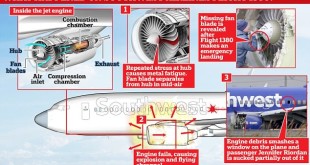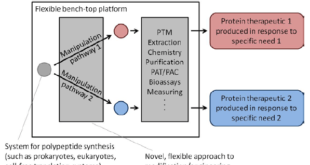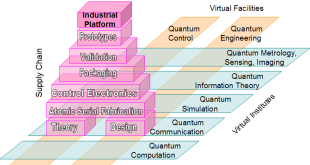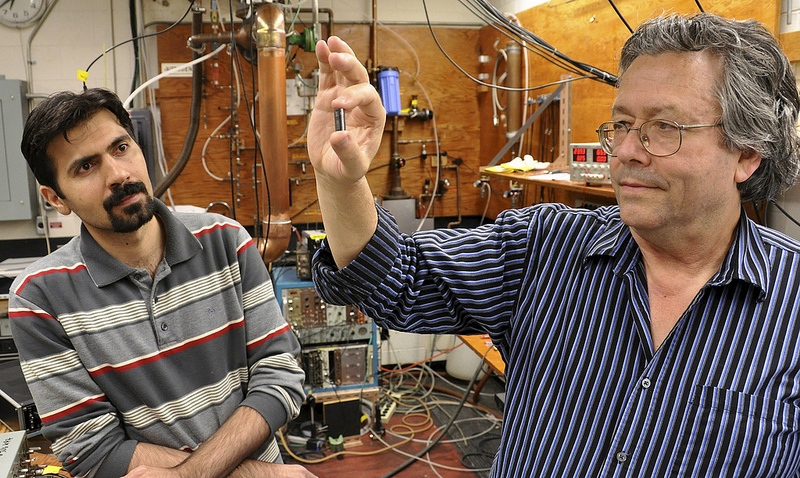Our society’s infrastructure is increasingly dependent on software deployed on a wide variety of computing devices other than commodity personal computers, such as industrial equipment, automobiles, and airplanes. Unlike commodity computers that have short upgrade cycles and are easily replaceable in case of failure, these computing devices are intended for …
Read More »New structural health monitoring technologies can detect aircraft damage in real time and even predict failures
All kinds of engineering infrastructures undergo aging, and damage appears as a consequence of the loads applied to them, so inspection and maintenance actions are required to predict and lengthen their lifetime thus avoiding catastrophic failures. Due to the harsh conditions suffered by aircraft structures, periodic and scheduled inspection and …
Read More »Quantum Sensors like Quantum magnetometers entering commercial market to detect and measure extremely small signals
The world, say many experts, is on the verge of a second quantum revolution. Energy quantization gave us modern electronics via the transistor and the laser, but humans’ burgeoning ability to manipulate individual atoms and electrons could potentially transform industries ranging from communications and energy to medicine and defense. The most …
Read More »DARPA Battlefield Medicine Bio-MOD program deveoping high speed manufacturing and delivery of urgently needed pharmaceutical products to Wounded Soldiers
Battlefield medicine, also called field surgery and later combat casualty care, is the treatment of wounded combatants and non-combatants in or near an area of combat. Studies of historical casualty rates have shown that about half of military personnel killed in action died from the loss of blood and that …
Read More »Future Software intensive and software defined military systems need new policies and technologies to field, maintain, update and upgrade software
Software is everywhere and is in almost everything that the Department operates and uses. Software drives our weapon systems; command, control, and communications systems; intelligence systems; logistics; and infrastructure, and it drives much of the backroom enterprise processes that make the Department function. If cyber is the new domain in …
Read More »Quantum engineering established at leading universities world-wide to realize quantum hardware of quantum computers, cryptography and sensors
Traditionally, quantum science has been a domain of fundamental research explored mostly by physicists. At the current state of the art the basic properties of the systems considered for realizing quantum hardware are understood at a great level of detail. Now, it becomes increasingly more important to develop quantum systems which …
Read More »New Manufacturing technologies paving the way for Silicon or Solid-state quantum computing
Quantum bits, or qubits, are the basic building blocks of quantum computers, just as bits are that of modern computers. Researchers around the world have been exploring a range of different physical systems to act as qubits, including trapping and isolating ions by using electromagnetic fields, photons trapped in microwave …
Read More »Printed and flexible electronics (PFE) revolution require Smart manufacturing concepts and printing technologies
While the conventional electronics like computers and smartphones is built around silicon integrating billions of transistors and is manufactured using complex, costly and wasteful processes in multi-billion dollar foundries . The printed and flexible electronics aim to replace this by “organic” semiconductors which are long chains of thousands of repeating …
Read More »Military requires Printed and flexible electronics (PFE) and Hybrid Systems enabling Internet of Things, Sensors on Aircrafts, to soft robotic exoskeletons
While the conventional electronics like computers and smartphones is built around silicon integrating billions of transistors and is manufactured using complex, costly and wasteful processes in multi-billion dollar foundries , The printed and flexible electronics aim to replace this by “organic” semiconductors which are long chains of thousands of repeating …
Read More »DARPA’s LUMOS to develop Photonic integrated circuits (PICs) and photonics platforms for defence applications
Photonics is a breakthrough technology as it uses photons (smallest unit of light) as the data carrier instead of electrons (smallest unit of electricity) used in electronic ICs. As light travels at very high speeds, photonics is widely used to transfer huge amounts of data at a very high speed. …
Read More » International Defense Security & Technology Your trusted Source for News, Research and Analysis
International Defense Security & Technology Your trusted Source for News, Research and Analysis









